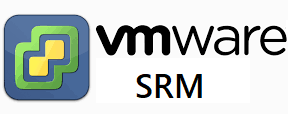introduction
Information technology become these days the most organizational assets that should be protected in Enterprise Company or even SMB companies
Best Practices for Enterprise Disaster Recovery (DR) basically consist of designing and implementing fault-tolerant hardware and software systems that can
- survive a disaster (business continuance)
- resume normal operations (business resumption),
- with minimal intervention (automated as much as possible )
- And, ideally, with no data loss.
Building fault-tolerant environments to satisfy Enterprise DR objectives and real-world budget constraints can be expensive and time consuming and requires a strong commitment by the business.
DR plans typically address many types of disasters , including but NOT limited to :
- Extensive or extended IT facility damage due to natural disaster (earthquake, storm, flooding, and so forth) or other causes (fire, vandalism, theft, and so forth).
- Extended loss of IT facility critical services, for example., loss of power, cooling or network access.
- Hardware failure
- Criminal attack that could IT environment to stop responding
Disaster Recovery Plan
IT disaster recovery plans provide step-by-step procedures for recovering disrupted systems and
networks, and help them resume normal operations.
The goal of these processes is to minimize
any negative impacts to company operations.
The IT disaster recovery process identifies critical IT systems and networks;
then prioritizes their recovery time objective; and delineates the steps needed to restart, reconfigure, and recover them.
A comprehensive IT DR plan also includes all the relevant supplier contacts, sources of expertise for recovering disrupted systems and a logical sequence of action steps to take for a smooth recovery.
What is Site Recovery Manager (SRM)?
VMware Site Recovery Manager is an extension to VMware vCenter that provides
- disaster recovery,
- site migration
- and non-disruptive testing capabilities to vSphere Environment
SRM is fully integrated with VMware vCenter Server
Features and Benefits of SRM
- Application-agnostic protection eliminates the need for app-specific point solutions
- Automated orchestration of site failover and failback with a single-click reduces recovery times
- Frequent, non-disruptive testing of recovery plans ensures highly predictable recovery objectives
- Centralized management of recovery plans from the HTML5 UI replaces manual runbooks
- Planned migration workflow enables disaster avoidance and data center mobility
- VMware vSAN™ integration reduces the DR footprint through hyperconverged, software-defined storage
- Supports multiple versions of vCenter enabling flexible pairing and upgrading
- vSphere Replication integration delivers VM-centric, replication that eliminates dependence on storage
- Support for array-based replication offers choice and options for synchronous replication with zero data loss
- Self-service, policy-based provisioning via Storage Policy Based Protection Groups, VMware vRealize™ Orchestrator, and VMware vRealize Automation automates protection
How SRM Works
VMware Site Recovery Manager (SRM) is an orchestrator that automates the transfer of virtual machines to [a local cluster ] or [remote recovery site].
SRM automates the recovery or migration of virtual machines between protected site and a recovery site.
Protected site is your primary site where active production workloads are running
and Recovery site is the datacenter location where you want to move your production workloads in case of Disaster in your primary datacenter.
Virtual machines are moved to recover from a disaster or as a planned migration.
vCenter Site Recovery Manager facilitates the clean shutdown of virtual machines at the protected site for a planned migration.
vSphere Replication VS Storage Replication Adapter
we have mentioned above that SRM no more than orchestrator ,
SRM utilizing another software to move VM from production site to disaster recovery site
if you are going to migrate specific VM from production to DR site : then best software is called vSphere replication
but if are going to move whole storage array [SAN or ISCSI or NFS ] from production to DR site : then the software is called storage replication adapter [ SRA ]
below let us to differentiate between both
Storage replication Adapter [SRA]
- best utilized to migrate or synchronize specific whole storage from production to DR site
- is the Code written by our storage partners to allow SRM to communicate with storage arrays.
- each storage vendor [liek HP , DELL ] provide their own SRA for each type of storage
- deployed as software
- some time called array-based replication,
- the same replication technology must be available at both sites, and the arrays must be paired.
vSphere replication
- best utilized to migrate or synchronize specific VM from production to DR site but NOT whole storage at once
- free software from VMware
- downloaded as [Open Virtualization Format (OVF)
- deployed as VM inside ESXI host
vSphere Replication Components :
- VR Appliance (vSphere Replication Appliance) – this used to be called the “VRMS”, and provided management capabilities for the VR framework. This function persists in the VR Appliance, and “VRS” functionality has been integrated with the appliance.
- VR Server (VRS) is vSphere Replication Server – an optional scaling component.This provides a replication target. This functionality is included in the VR Appliance, but to scale to higher than 100 replications, additional VR Server instances can be deployed.
- vSphere Replication Agent (VRA) Present on every vSphere 5.x host, it only becomes active when a protected VM is writing data.
- Network file copy (NFC) protocol is used to commit network based disk writes by vSphere. The VRS receives replicated blocks and distributes them via NFC to the vSphere hosts for writing to storage.
Here in Network Pioneers :
we will use vsphere replication as we are working in test environment and we have a few VMs
Conclusion
SRM is best practice for disaster recovery plan DRP [ as part of business continuity plan BCP ]
SRM is Orchestrator tool that run with wither [SRA ] or [vsphere replication] to synchronize VM from production site to DR site


